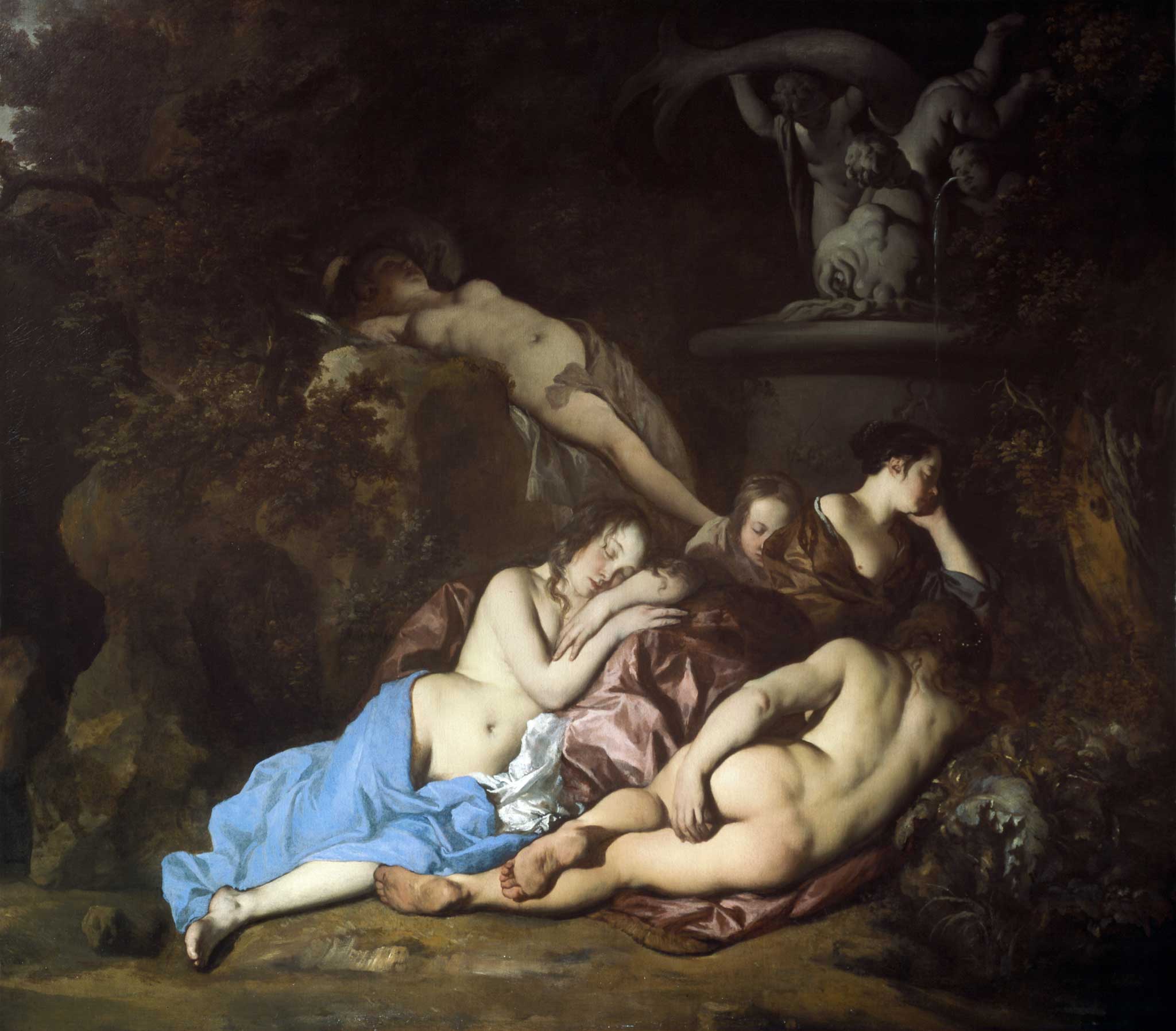Great works: Nymphs by a Fountain c.1650 by Peter Lely
Dulwich Picture Gallery, London

Peter Lely was one of those great Dutch painters who helped to define and create what we now blithely describe as British painting. Yes, British painting is a thoroughgoing European construct. We would be nowhere without its example. Much of it was also a courtly matter, painters imported from the Low Countries by, for example, the Caroline courts of the tumultuous 17th century (Anthony van Dyck painted for Charles I, raising him up on horseback in order to flatter his diminutive stature, and Lely was chief painter to Charles II) in order to aggrandise the monarchy and give an ennobling edge to its often rather dissolute hangers-on.
This is a great erotic painting that is partially pretending to be a classical scene of sorts – nymphs sleeping, all of a tumble, in a grove with classical architectural features, drinks spiked by Hypnos, god of sleep. In order to make them that much more vulnerable to predators? Quite so. In order for them to be absolutely still so that we can examine their exquisite perfections as minutely as possible? Quite so. How Charles II and his lewd entourage would have guffawed at this one!
It takes us by surprise. We expect it to be a painting in a tradition that usually idealised the naked body, set it at some distance from real human nakedness – something more akin to what Rubens or Poussin might have done. And it is – but only to a degree. In fact, it is a curious hybrid of a thing that uses the classical arcadian scene as a point of departure.
These are not idealised nymphs. They are living and breathing naked girls, painted for the onlooker's delectation, and rendered all the more vulnerable by the fact that they are sleeping – which means that we can steal upon them without their noticing or protesting. Their postures are strangely ill assorted; they don't quite work together. We cannot quite fathom how the nymphs at the back fit, why they seem so upright even as they sleep, where they have tucked their legs etc. The one sprawled backwards (across an outcrop of rock, that most uncomfortable of resting places), well, could she really lie like that, and would her breasts look quite so rounded if she were at that extraordinary angle? Probably not.
It scarcely matters though. It is all a bit of an erotic fantasy, and made all the more so by the fountain behind, which looks a little like a grey extension of those sleeping beings in the foreground, as if one group has emerged from the other or the one is related in some way to the other. And yet the one is animate and the other stone. In fact, the human is rawly human – in spite of its arcadian setting.
See how filthy are the feet of the young woman who lies sprawled full length, facing away from us, and how plump is the stomach of the young woman on the left. Hair is tangled, cheeks are pink and flushed. Fleshy plumpness is beautifully rendered. They lie amidst the disarray of their gorgeously mis-used fabrics, as if this were an intimate bedroom scene spirited to the woods. What draws the eye most of all is that lovely nourishing light spread so evenly across this golden expanse of naked flesh, which seems to rove around caressingly, like a curious bobby's torchlight.
They seem to be borne forwards towards us – or offered up to us – like a secretive gift, by this bower of enveloping woodland, which represents the fecundity of nature. A double fecundity then, and all chanced upon quite unexpectedly.
Unsurprisingly, Lely was a great success at the court of Charles II. Knighted in 1680, he ran a hugely productive studio and amassed great wealth. He clearly had his paint-stained index finger on the pulse of the times.
About the artist: Peter Lely (1618-80)
Peter Lely was born in Westphalia of Dutch parents (his father was a serving officer in the armies of the Elector of Brandenburg,) and he studied painting in Haarlem before moving to London in 1641, the year of Van Dyck's death. He remained there for the rest of his life, a canny survivor and pictorial chronicler of the great men of his times during years of massive political upheaval. He was appointed Principal Painter in Ordinary to Charles II in 1661 at a stipend of £200 per year.
Subscribe to Independent Premium to bookmark this article
Want to bookmark your favourite articles and stories to read or reference later? Start your Independent Premium subscription today.

Join our commenting forum
Join thought-provoking conversations, follow other Independent readers and see their replies